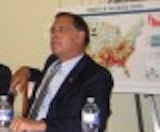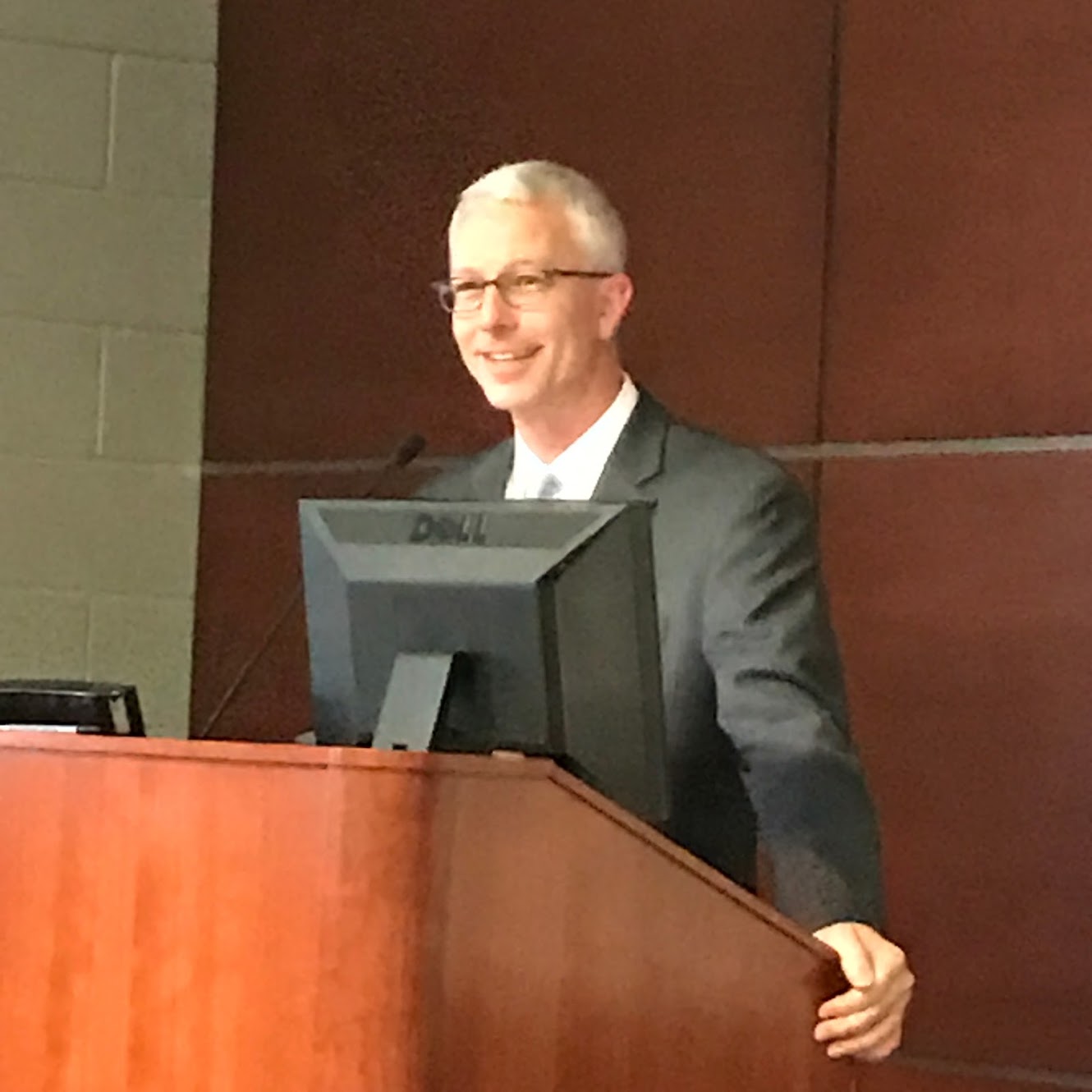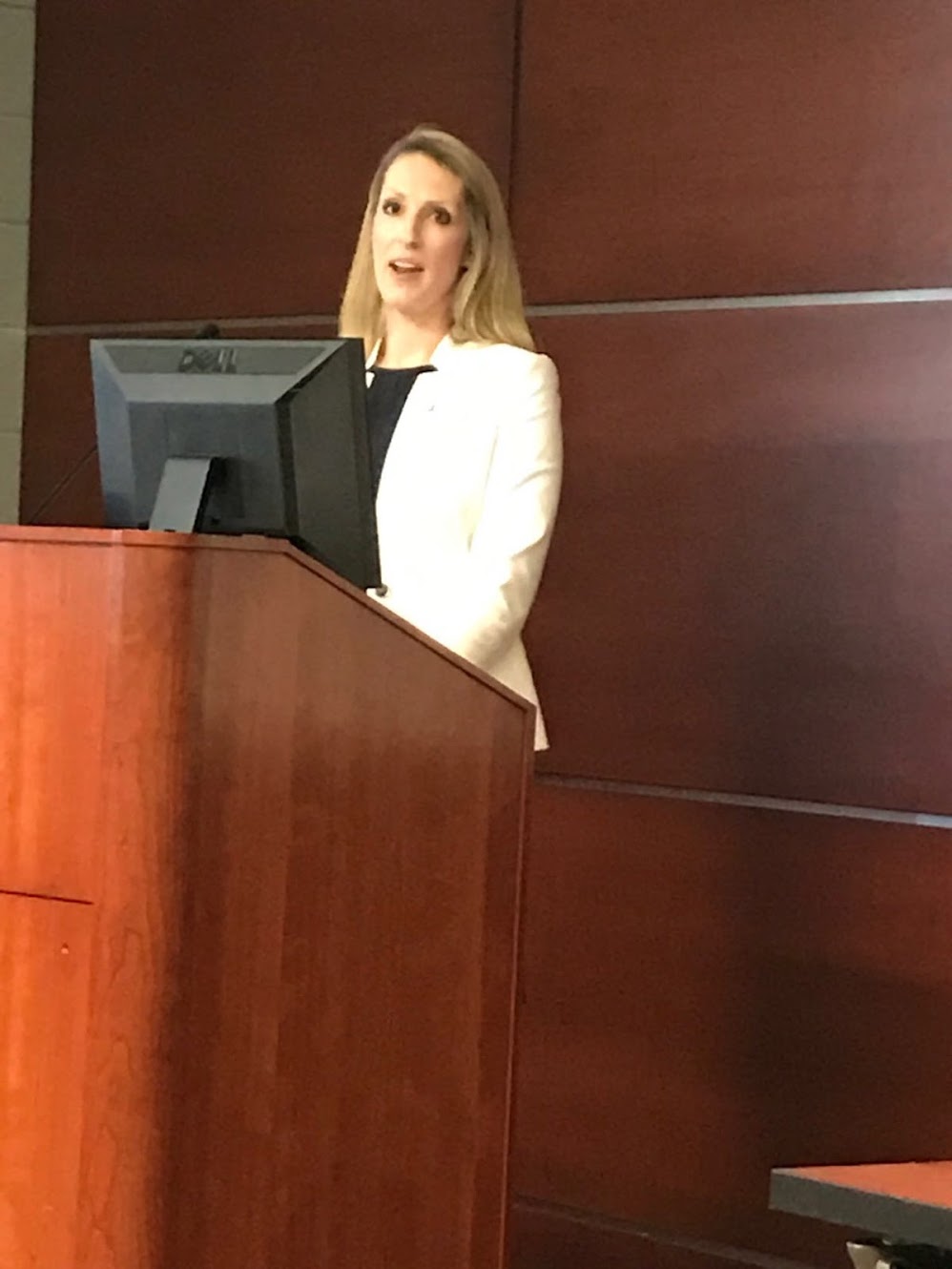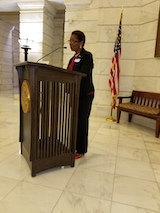Economic Equality Caucus
which advocates for economic equality across the USA.
| Home | Organizational Structure | State Coordinators | Executive Director | Caucus Articles | Memberships | |||||
| "Delta Vision, Delta Voices" | ||||||||||
|
Help Advocate for Economic Progress and Equality. Donate to the Delta Caucus/Economic Equality Caucus. |
||||||||||
Delta Grassroots Caucus Events

Credit Michael Hibblen/ KUAR News, Arkansas Public Radio; Former President Bill Clinton speaking to the Delta Grassroots Caucus on May 2, 2013, at the University of Arkansas Clinton School of Public Service, Little Rock

U. S. Senator John Boozman, Arkansas, at a Delta Grassroots Caucus meeting at the US Capitol

Brad Cole, Executive Director of the Municipal League of Illinois; previously a senior aide to former Republican US Sen. Mark Kirk of Illinois, earlier Mayor of Carbondale, Illinois, veteran Delta regional advocate, speaking at the Delta regional conference in West Memphis, Arkansas on April 26, 2019.

President Bill Clinton makes a comment to Delta Caucus Director Lee Powell at a meeting in Blytheville, Arkansas (in the northeast Arkansas Delta) on Nov. 2, 2014

The Delta Caucus would like to pay tribute to the late, great U.S. Sen. Thad Cochran of Mississippi, a powerful force in the US Senate for decades and a champion for the Delta. Sen. Cochran passed away on May 30, 2019. He spoke to the Delta Caucus on many occasions over the years (he is pictured above speaking to a Caucus event on Capitol Hill in Washington, DC) and his thoughtful, courteous and bipartisan leadership will be sorely missed.

Marcie Lawson, Executive Director, Sikeston, Missouri Regional Chamber and Area Economic Development Corporation, speaking at the Delta regional conference in West Memphis, Arkansas on April 26, 2019.

Alan Gumbel, Greater Memphis Alliance for a Competitive Workforce, Memphis, Tennessee, speaking at the Delta regional conference in West Memphis, Arkansas on April 26, 2019.

Mayor Shirley Washington of Pine Bluff, AR, speaking to the Delta Caucus at the Arkansas Capitol Rotunda in 2017.
The War On Poverty's Impact: Looking Back After 50 Years; June, 2014
Posted on June 03, 2014 at 01:28 PM
In condensing the impact of the War on Poverty since its beginnings 50 years ago, a candid assessment indicates mixed results:
The major advances have been substantial reductions in overall poverty of 26% in the late 1960s to approximately 15% today, and a dramatic decrease in poverty for senior citizens from 36% in 1959 to 9% in 2012.
On the negative side, poverty rates for women and especially single mothers at 30%, and children–especially African American children at 40% and Hispanic children at 30%–are still disturbingly higher than for the overall population.
The positive side: The good news–overall substantial reduction in national poverty: Accurate poverty rates as of the late 1960s were 26%–a dismally high figure for a wealthy country, and they have fallen to approximately15% today, even as we are still slowly recovering from the Great Recession. Poverty for senior citizens was FOUR TIMES WORSE in 1959 at 36% than it was at 9% in 2012.
Poverty rates fluctuated over the last 50 years and at times falling to 11%. Any poverty for the nation’s mightiest and one of its wealthiest nations is too much, but any unbiased observer who looks at the facts will have to acknowledge the substantial improvement: over one fourth of the population was poor 50 years ago at 26%, while the figure has ranged from 11% to 15% in the era after the War on Poverty programs began to have an impact.
In 1964, despite the benefit of Social Security, poverty was extremely high among senior and their medical bills were one of the major reasons for that. At that time, 44% had no coverage. Today, primarily because of Medicare, less than one out of seven seniors don’t have coverage.
The negative side: The bad news–women (especially single mothers with an alarming 30% poverty rate) and children still lag too far behind, and especially minority children, with 40% of African American children and 30% of Hispanic children living in poverty.
There are many impoverished white males in our region, but it is even much worse for women and children.
These are NATIONAL FIGURES–this of course means that for a highly diverse region like the Delta that has a large African American population, a rapidly growing Hispanic population in many areas, and a large number of single women leading households, these very high poverty rates are much worse for the Greater Delta Region, where the poverty rate is approximately 55% higher than the national average, and the percentage of single mothers heading households is about 34% higher than the national average.
We expansively define the Greater Delta Region–it might more accurately be called the “South Central USA Region” as extending from southern Illinois and Missouri, through western Kentucky and Tennessee, Arkansas, Mississippi and down to the Louisiana Gulf Coast and eastward to Selma and the Alabama Black Belt.
The national figures for women and children are disturbing, but because they are even worse for the Greater Delta Region, the June 12-13 Delta Grassroots Caucus conference on “Jobs, Health, Women and Children’s Issues” will devote special attention to the special issues regarding women and children. We have a distinguished program of women speakers, and the gubernatorial and Congressional candidates will also be asked about this set of issues as part of their presentations.
President Lyndon Johnson announced the Great Society and War on Poverty program at a University of Michigan commencement speech on May 22, 1964. Now we should look back at where the War on Poverty made impressive gains, and other important areas where we still have a long way to go in the Delta and across the USA.
TABLE OF CONTENTS
I. Overall Reduction in General Poverty Rate
II. Brief Economic Data on the Greater Delta Region’s recent history (updated collection of data on the Delta is below in the last section of this report)
III. Progress for Senior Citizens, Remaining Challenges in Health Care
IV. Civil Rights and Education
V. SNAP, School Meals, WIC–Progress in Reducing Hunger and Food Insecurity Relative to the Dismal Situation as of the early 1960s
VI. Flaws and/or Disappointments of the War On Poverty
VII. Some Voices Still Ring Out Clearly Even After Half a Century: Dr. Martin Luther King, Jr. and Robert F. Kennedy
VIII. Collection of Overall Poverty, Child Poverty, Hunger and Food Insecurity Data for the Delta as of 2013
NOTE: We are experiencing technical difficulties with our website. The “Caucus Articles” and “Continue Reading” sections unfortunately go from left to right instead of normal format and we apologize for this being difficult to read. Our technical staff is working on the problem. We have never encountered this before so it may require some time to repair. Again, our apologies.
1. Overall Reduction in General Poverty Rate
A measured, objective assessment of the War on Poverty’s successes and disappointments is a far more constructive approach than dismissing all of the policies and work of both major parties and Independents over the past half century: We should focus on the key facts stated above and be wary of dismissive, extreme views that come from both the extreme left and the extreme right: there are those hard-core leftists who believe that the best way to generate action for the impoverished people in America is to shout about how terrible their plight is today and refuse to acknowledge any progress over the last half century.
By the same token, there are those on the extreme right who lambast all the fundamental economic safety net programs of the last 50 years and even charge that these programs actually made poverty even worse. These comments are just flatly erroneous from the factual standpoint state above.
The private sector has always been and always will be the greatest creator of jobs and prosperity–especially small businesses, which are the strongest engine for job creation. But the government also has a significant role to play in the economy, and this has come to be widely recognized by the great majority of political leaders in both parties.
We have to walk the fine line between acknowledging the continuing serious problems in the region, but not dismissing all the efforts of the past as worthless, in which case the response will be “Why bother to keep attacking poverty if it was all useless?”
II. Brief Economic Data on the Greater Delta Region’s Recent Economic History (Collection of Recent Data on Poverty, Child Poverty, Hunger and Food Insecurity is in the Last Section of the Report)
Within the Delta, we all know the poverty rates are unacceptably high in many areas. However, we still hear dismissive comments that throughout the Delta’s history our region has always been equally impoverished administration after administration, decade after decade, and all the policies and leadership positions of both parties and all leaders never made any difference. This is utterly false: in the period of the 1990s and 2000, there was a substantial improvement in employment and poverty data:
At the beginning of the Clinton administration in 1993, poverty rates for the Delta counties of the region was at 7.5%. By the end of the Clinton administration in 2000, unemployment had fallen to 4.2%. There were still counties where unemployment was much too high even then, but the overall improvement is a fact.
In 1997, the poverty rate in the Delta was 18.4%. By 2000 it had fallen to 16.6%, an improvement of about 10% in a rate that historically had either remained intractable or became worse over the decades. It was still too high, but the substantial improvement and the fact that we were heading in the right direction are clear.
No one is trying to deny that income inequality has been getting worse for many decades–even in the 1990s, and especially the top 1% has been outgaining the rest of the population and that is a serious problem. What we are addressing here is where we have succeeded and where we have failed in reducing poverty, and certainly the growing gap between the wealthiest Americans and the vast majority is a failure acknowledged by many leaders in both parties.
We can give bipartisan credit to both parties, the states and the private sector, but it is simply a fact that during that period there was a substantial improvement. We all know there has been a decline since then; however, what is not widely known is that the decline in the Delta was already marked long before the Great Recession and the much too slow recovery.
Poverty increased substantially in our region by 2004, all of the gains made during the latter 1990s and 2000 had already been lost: poverty in the Delta rose from 16.6%ib 2000 to 18.6% by 2004, which was higher than it had been in 1996 at 18.4%
The period from 2001 to 2005 was one of relative prosperity for middle class and wealthier Americans, indicating that the income inequality that of course has always been a problem throughout our history–but at some times much worse than others–was steadily getting worse.
One fact is indisputable: the best anti-poverty program is a decently paying job. Today, the poverty rate nationally for full-time workers is 3%. The poverty rate for the unemployed is 33%.
Let’s take a measured, restrained look at where we have made major progress and where we still have a long way to go in bringing economic opportunity:
III. Progress for Senior Citizens, Remaining Challenges for Health Care
Senior citizens: Medicare, Medicaid, SNAP, the Earned Income Tax Credit, were among the major programs that led to the dramatic progress in reducing senior citizens poverty from 36% in 1959 to just 9% in 2012. These were not the only causes but their impact was deep.
Health care: Medicaid and Medicare provided major assistance for the elderly, low-income people and the disabled. In 1966, about 19 million senior citizens were enrolled in Medicare. By 2010, 47 million people, both elderly and disabled, participated in Medicare, according to a May 18, 2014 report in the Washington Post by Karen Tumulty, “The Great Society at 50: Lyndon Johnson’s America.”
Despite this progress, the American health care system still lags far behind many other of the wealthiest countries. Medicare, Medicaid and other Great Society programs provided a good start and the situation has greatly improved relative to the admittedly dismal conditions in the early 1960s for the poorest Americans, but we still have a long way to go.
Private option as crucial example of the viability in revising and improving the Affordable Care Act–a major topic for the June 12-13 Delta conference at the Clinton Library Great Hall: In Arkansas, Democratic Gov. Mike Beebe worked in a bipartisan fashion with the Republican majority legislature to pass the private option health care plan, which modifies the ACA substantially and is different from “Obamacare” in that it allows for more private sector involvement and more individual consumerism.
Arkansas’ private option health care plan is widely seen as having great potential for expanding Medicaid and providing health coverage for many who did not previously have it. This will improve the badly underserved health care situation in the Arkansas Delta over time, and reduce the current problem of having so many uninsured people make emergency room visits that drive up costs for everybody.
We will have state legislators from both parties, Gov. Beebe, and both the Republican and Democratic nominees for governor in Asa Hutchinson and Mike Ross at the conference to discuss the future of the private option health care plan, which has received substantial national attention as providing a model for other states to follow.
IV. Education and Civil Rights
Education: The Elementary and Secondary Education Act of 1965 committed the federal government for the first time to aid local school districts with many low-income families. The Head Start program launched in 1965 was designed to give underprivileged children help before first grade. Head Start has served more than 31 million children from birth to age 5 since 1965.
The Higher Education Act of 1965 provided schlarships and low-income loans to open up more college opportunities. In 2008, more than 64% of undergraduates in college received federal assistance in some form. Today the funding levels, interest rates and other components of federal aid to higher education are the subject of conflicts between those who would argue for investments in education and those who oppose it on the basis of cost.
In the Greater Delta Region we suffer from an unusually low number of college graduates. Improved education is widely seen as the major hope for a brighter future for our region. There is cost involved in aid to education but the costs of low educational levels is even higher.
Civil rights legislation: The Civil Rights Act of 1964 and the Voting Rights Act of 1965 were landmark achievements in racial justice, but also had major implications for economic progress by improving educational opportunities and discouraging job discrimination for minorities.
While it was profoundly controversial at the time, the civil rights reforms have come to be recognized as historic accomplishments.
To cite one example of this bipartisan consensus, Dianna Furchtgott-Roth, who was the labor Department’s chief economist in President George W. Bush’s administration and now a senior fellow at the conservative Manhattan Institute for Policy Research, said: “The anti-discrimination laws that were passed in the 1960s have probably done more to reduce economic inequality than have government programs.”
There is the important qualification that BOTH the “government programs” like Medicare, Medicaid, SNAP, Head Start, AND the anti-discrimination laws reduced economic inequality, it is nonetheless encouraging that a conservative Republican appointee would give so much credit to the 1960s civil rights reforms.
Progress in opportunity for elected office: At the time of the passage of the Voting Rights Act, there were about 300 African American elected officials in the USA; in 2011 the Joint Center for Political and Economic Studies reported that there were more than 10,500 African American elected officials.
Immigration: The Delta is a diverse region and the Delta Grassroots Caucus welcomes reforms that promote diversity. The Immigration and Naturalization Act of 1965 ended the national origins policy that was established in 1924 and increased the number of immigrants from Asia, Africa, Latin America and other parts of the world.
In 1965, 296,000 people gained legal permanent status. In 2012, 1.03 million people became legal permanent residents.
V. SNAP, School Meals, WIC and other Nutrition Programs:
Progress as Compared to the Extremely High Levels of Hunger and Food Insecurity as of the early 1960s
Major success story–SNAP (formerly known as food stamps), school meals, federal aid to food banks, the Women, Infants and Children (WIC) program and the major USDA nutrition programs:
Food stamps and the other major nutrition programs were either greatly increased or begun in the 1960s, and received bipartisan support for the vast majority of the time ever since.
Consider this quick fact sheet on many of the key benefits of SNAP:
SNAP’s efficiency has been greatly improved in the last two decades, and waste, fraud and abuse is down to slightly over 1%–making it actually one of the most efficient of the largest scale government programs.
Bipartisan support for SNAP–Any abuse is bad and we should keep cracking down on those who abuse SNAP, but the fact is that bipartisan administrations from Presidents Clinton, George W. Bush and Barack Obama have steadily improved the efficiency of the program. Earlier, President Nixon, Robert Dole and many prominent Republicans joined Democrats in support of SNAP.
SNAP benefits are so small at an average of $4.50 a day that no one can reasonably claim that recipients are “lazy” and refuse to get a job just so they can receive $4.50 a day. The great majority of our grassroots leaders all over the region overwhelmingly report that most SNAP recipients would love to have a decently paying job and receive them only out of deep necessity. Usage of the program is in fact somewhat smaller because of the unfortunate social stigma that is still attached to receiving SNAP.
High SNAP spending is caused by high unemployment and low wages, NOT laziness, so creating jobs and not making huge cuts in SNAP is the way to reduce SNAP spending. at one in five children and one in seven of all Americans received SNAP in 2013, 68% of families suffering from food insecurity had at least one employed family member, another 10% had at least one adult working part-time,
Another 7% had an adult actively seeking work, and an additional 7% were headed by an adult with a disability. Many white families are SNAP recipients. The plurality of hungry families are white people, although many minorities suffer at higher rates.
Children, adults with low-paying jobs, and disabled people are hard-working people and they make up the majority of SNAP recipients. Conservative estimates are that the number of children receiving SNAP is about 40%. The nonprofit Food Research and Action Center calculates that nearly half of SNAP enrollees are children. 92% of SNAP recipients do NOT receive welfare, and only 8% do.
Economic benefits of SNAP: While preventing hunger and malnutrition is the most important reason for SNAP, the program also has a beneficial economic impact:
According to the nonpartisan Moody’s Analytics, every dollar spent on SNAP increases Gross Domestic Product by from $1.73 to $1.79.
An increase of SNAP funding generates 17,900 jobs, according to the Joint Congressional Economic Committee. SNAP generates large-scale food purchases by major food producers and outlets like Tyson Foods, Wal-Mart, and other major business leaders. It’s not only anti-poverty advocates but business leaders who support SNAP.
SNAP saves countless billions of dollars in health care costs: The proposed SNAP cuts of $40 billion that were defeated in Congress would have worsened diabetes problems and increased diabetes costs by $15 billion over a 10-year period, according to the nonpartisan Robert Wood Johnston Foundation and Pew Charitable Trusts.
SNAP has already endured substantial cuts over the past year, so we are NOT in a situation of run-away spending on the program but are actually seeing it being cut: the stimulus benefit boost for SNAP expired in November, 2013, and the farm bill, while rejecting the extreme $40 billion cut, did cut $8 billion over 10 years.
As of 1960, there was massive malnutrition and even a few cases of starvation in the Delta, but today the most extreme forms of hunger and malnutrition have been eliminated: the same Field Foundation that had lamented the plight of hunger in the earlier era was able to report in a 1979 factual analysis the following major progress:
Beginning with President Kennedy’s doubling of the number of foods on the commodity surplus list and starting the food stamp program in 1961, and continuing with major food stamp and other nutrition funding under Presidents Nixon and Johnson, the alarming levels of hunger in the Delta and other impoverished regions reported in the 1960s had been dramatically reduced by 1979.
The Field Foundation concluded in the 1979 report that these major accomplishments were NOT due to an improvement in living standards or increased employment, but rather “The Food Stamp Program, the nutritional components of Head Start, school lunch and breakfast programs, and WIC (Supplemental Assistance to Women, Infants and Children) have made the difference.
Economists have pointed out the grossly inaccurate figures produced by some government agencies by failing to take into account the impact of SNAP, Earned Income Tax Credit and other programs in directly reducing the poverty rate:
SNAP kept four million Americans out of poverty in 2011. The Earned Income Tax Credit (EITC) kept six million Americans out of poverty in 2011.
Private sector job growth is the biggest engine for the economy, but to fail to take into account programs like SNAP and the EITC that kept 10 million Americans out of poverty in 2011 makes no sense. Economists cited in surveys in news reports by the New York Times (a paper that is inclined to take the “purist” liberal approach and dismiss the War on Poverty as having not done very much) emphasized that the difference in poverty if these programs did not exist is massive.
VI. Flaws and/or Disappointments of the War on Poverty
Flaws and/or disappointments of the War on Poverty: The Office of Economic Opportunity certainly had some successes but also had some failures. Above all, it did not last very long, unlike SNAP, Medicare, Medicaid, Head Start, and many of the other major programs. The OEO was abolished in 1981.
The Model Cities program was shut down even earlier, in 1974. This was initially regarded as an important initiative, but it proved impractical in the real world. Mayor Dick Lee of New Haven, Connecticut supervised one of the most extensive of the federally financed initiatives said, “If New Haven is a model city, God help America’s cities.
The Vietnam War devoured resources increasingly from mid-1965 onwards that decreased funding for War on Poverty programs: President Johnson’s tragic decision to escalate the Vietnam War devoured funding, blood and will that could have sustained the War on Poverty, so that funding for these programs in some cases was already suffering by the late 1960s.
In later years, many other War on Poverty programs were cut. It is a myth that these expenditures became massive in 1964 and increased every year for 50 years. Some programs like Medicare, Medicaid, SNAP, usually fared well in their budgets over the years, but many others did not.
Reagan administration cuts to War on Poverty programs: As noted above, the Office of Economic Opportunity was abolished in the early Reagan administration, and there were many other budget cuts in that era to anti-poverty programs. Those who claim that the spending has been rampant decade after decade need to remember the history of the Reagan administration.
There are differing points of view, of course, as to whether President Reagan’s statement that “It was LBJ’s war on poverty that led to our present mess” was justified or not, but his budget cuts and opposition to many War on Poverty programs refute the notion that spending always ran wild on these programs. It is also true that despite President Reagan’s efforts to “undo the Great Society,” as he himself put it, most of those programs continued, albeit with differing budget results over the years.
Welfare program changes in 1996: The 1996 welfare overhaul was motivated largely by the constructive intent of removing an incentive to continue welfare dependency and placing the maximum emphasis on employment incentives. On the other hand, it substantially reduced cash assistance available to needy families, in many cases headed by single mothers. This is unlikely or impossible to change right now with the budget impasse in Congress, but when the economy improves and revenue increases, it would be highly beneficial to single mothers to restore much of these cuts–they are expected to work, but if they did not have to spend most of their low weekly pay on child care while they are working, they would stand a much better chance of making ends meet.
President George W. Bush administration economic policies and cuts to programs for lower income working families: With the exception of President George W. Bush’s support for SNAP and a few other key safety net programs, it is a fact that his administration’s policies cut many other programs that aided lower income families and promoted the accumulation of wealth by the wealthiest Americans on the grounds that benefits to them would trickle down to many other Americans.
People may have different views as to whether this was correct policy or not, but the Bush administration again demonstrates the fact that far from feeding massive amounts of funding decade after decade to the War on Poverty programs, there have been periods when these programs have not fared very well in the budget process.
Federal minimum wage issue: There are sharply differing opinions on this issue. According to extensive research from a noted economist of the University of Massachusetts, Amherst, Arindrajit Dube, if the federal minimum wage is raised from $7.25 to $10.10, it would reduce the poverty rate of working-age Americans by 1.7%, lifting approximately five million people out of poverty.
Above all, as emphasized above: single mothers heading households, children, and especially African American and Hispanic children still lag far behind most of the rest of the population.
VII. Some Voices Still Ring Clearly After Half a Century: Martin Luther King, Jr., and Robert Kennedy
Dr. Martin Luther King, Jr., played a major role in the 1960s in jolting the conscience of America about poverty and hunger in our country. It is especially poignant that the people of the Delta should pay tribute to the legacy of Dr. King, because many of the historic events of the civil rights movement took place in our region, from the Little Rock Central High crisis, to Mississippi Freedom Summer, civil rights events in New Orleans, the Birmingham and Selma demonstrations, and sadly the assassination of Dr. King in Memphis.
One of King’s great accomplishments for the Delta was to dramatize the tragically high levels of hunger and poverty in the Delta. On one of his historic visits into the heart of the Delta, he held a meeting in the terribly impoverished community of Marks, Mississippi. He told a packed house in a Marks church that “Statistics reveal that you live in the poorest county in the United States. That is not right.” We are going to make America see you. We are not going to let them turn their backs on you and avert their eyes.
He wanted to hear from the people directly about their plight. One mother said she and her children had to live off nothing but pinto beans morning, noon and night. Another said she had no food and had no way of getting any food.
In a similar meeting in Greenwood, Mississippi, at that time, King literally wept as he heard mothers say that they did not even have blankets to cover their children on old nights. King said “God hates this. And we are going to say in no uncertain terms that we aren’t going to accept it any longer. We’re going to make America see poor people.”
As a result of the national outcry generated by Dr. King, Robert Kennedy and other leaders-most notably in the heart of the Mississippi Delta region, there was a major expansion in the 1960s of the food stamp, school meals and other nutrition programs. Those programs eradicated the worst instances of hunger and malnutrition across the country and have received bipartisan support through all these decades.
In the last several years of his life, King increasingly changed his focus to economic progress and justice. Undoubtedly he would be gratified if he were alive today at the progress we have made in eliminating the most extreme forms of poverty and malnutrition, just as he would be deeply concerned about the people who still lag so far behind the rest of our nation.
Senator Robert F. Kennedy made a historic trip to the Mississippi Delta in 1967 to see firsthand the poverty and hunger there. In Greenville, Kennedy and a few other Members of Congress visited new adult literacy classes sponsored by the Office of Economic Opportunity. They went to the Delta Ministry’s Freedom City, an encampment for those who had been heavily involved in civil rights protests. The activist Ida Mae Lawrence said she had been deprived of her midwife’s license for registering to vote.
Many of the mothers in the area told Kennedy that they could not afford the $2 per month charge to obtain food stamps. He asked a boy what he had for his three meals that day, and he replied he had molasses for breakfast and dinner but nothing for lunch. Marian Wright, a Student Nonviolent Coordinating Committee founder and lawyer, was stunned as Kennedy went into places she would never go.
He sat on ragged cots and dirt floors that reeked of urine, held children with distended bellies and open sores. He was deeply disturbed and later called that day an epiphany that turned stale all the accomplishments of his privileged upbringing, according to Taylor Branch’s history of the civil rights movement, At Canaan’s Edge: America in the King Years, 1965-1968.
Kennedy and the other eight members of a Congressional subcommittee examining poverty in the Delta signed a letter to President Johnson reporting personal and scientific evidence of famine. Kennedy also made a separate appeal to Martin Luther King, Jr.–with whom at times he had personally disagreed–and wrote, “I cannot agree with you more that something must be done.”
As Robert Kennedy spoke and wrote to dramatize the plight of the poor in America, he said: “There are others from whom we avert our sight. Some of them are in the hills and hollows of the Appalachians…And there are others: on the back roads of Mississippi, where thousands of children slowly starve their lives away, their minds damaged beyond repair by the age of four or five.”
Reflect about one reality: as the Delta Caucus holds meetings in the state Capitol in Little Rock, the Clinton Presidential Library, other major venues in Memphis, Mississippi, Louisiana and across the region with governors, Members of Congress and other powers that be today, we are quite divere. But if we had held similar activities in the 1950s, virtually everybody there would have been white, and almost all would have been white males.
But today, from 35% to 40% of our participants are African American mayors, state legislators, executives of corporations and foundations, university and college leaders, national executive branch officials, and some Members of Congress. Women have prominent leadership roles. Dr. King and the movement did open those doors of opportunities to the corridors of power in our region and nation for people of diverse racial and ethnic heritage.
In the 50 years since President Lyndon Johnson announced the War on Poverty in 1964, we have come a long way in reducing hunger and poverty. But just as Dr. King did in the earlier era, today we need to make America see those who are still suffering. We should make our country see and act to help the people of the Delta and across America, regardless of age, gender, race or wealth to participate fully in the American dream of opportunity, prosperity and justice.
VIII. POVERTY AND HUNGER DATA IN THE DELTA, AND RANKINGS AMONG THE 50 STATES AND THE DISTRICT OF COLUMBIA
2013 FIGURES.
Mississippi, Arkansas, and Louisiana have over half the population of their states in the Greater Delta Region. The Delta poverty and hunger figures are even worse for the Delta areas of those states.
Tennessee also has a substantial Delta population, and also has an Appalachian population that is also economically distressed in the eastern part of the state. So the statewide figures are significant, albeit still considering that more prosperous areas like Nashville are different from the Delta. The statewide figures here are relevant, always acknowledging that the Delta area figures are worse.
The western Kentucky Delta is a small percentage of the statewide population, but again the eastern part of their state has a significant Appalachian population that is economically distressed as is the Delta.
The Alabama Black Belt is more economically distressed than Alabama as a whole, but there are other areas of poverty in the state.
The southeast Missouri Delta is a large area, but is more economically distressed than Missouri as a whole.
Southern Illinois is relatively speaking a very small part of the state of Illinois, and much of that state is far more prosperous than the southernmost area. Therefore, Illinois figures would be misleading and are not included. Southern Illinois has similar poverty and hunger rates to the rest of the region.
MISSISSIPPI
Poverty rate: 24.15%
Rank: 51st
Child poverty rate: 34.7%
Rank: 51st
Hunger and Food Insecurity: 20.9%
Rank: 51st
ARKANSAS
Poverty rate: 19.83%
Rank: 48th
Child poverty rate: 28.5%
Rank: 49th
Hunger and Food Insecurity: 19.7%
Rank: 50th
LOUISIANA
Poverty rate: 19.95%
Rank: 49th
Child poverty rate: 28.1%
Rank: 48th
Hunger and Food Insecurity: 15.7%
Rank: 41st
TENNESSEE
Poverty rate: 17.94%
Rank: 40th
Child poverty: 25.8%
Rank: 39th
Hunger and Food Insecurity: 16.2%
Rank: 43rd
MISSOURI
Poverty rate: 16.23%
Rank: 30th
Child poverty rate: 22.6%
Rank: 29th
Hunger and Food Insecurity: 17.9%
Rank: 16.7%
Rank: 45th
ALABAMA
Poverty rate: 18.96%
Rank: 44th
Child Poverty Rate: 27.5%
Rank: 47th
Hunger and Food Insecurity: 17.9%
Rank: 48th
KENTUCKY
Poverty rate: 19.38%
Rank: 47th
Child poverty rate: 26.5%
Rank: 42nd
Hunger and Food Insecurity: 15.6%
Rank: 39th
SOURCES FOR THIS REPORT: Previous Delta Grassroots Caucus documents at www.mdgc.us; USDA; US Census Bureau; US Bureau of Economic Analysis; New York Times, Washington Post; TalkPoverty.org: Half in Ten, Center for American Progress for compilation of data on 2013 poverty, child poverty, hunger and food insecurity; Taylor Branch: At Canaan’s Edge: America in the King Years, 1965-1968; Make Gentle the Life of This World: The Vision of Robert F. Kennedy (Edited and with an introduction by Maxwell Taylor Kennedy); DRA; Food Research and Action Center; Joel Berg and the New York City Coalition Against Hunger; Congressional Hunger Center; Delta Vision, Delta Voices: The Mississippi Delta Beyond 2000; the Clinton administration’s Delta report, published at the May, 2000 White House conference on the Delta in Washington, DC.
Back to the top